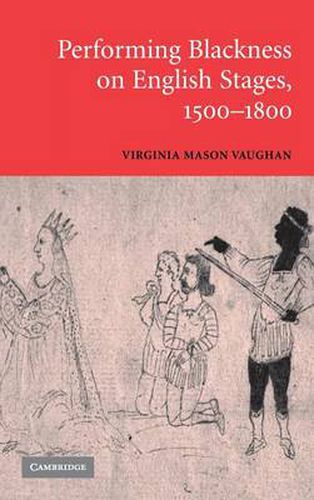Readings Newsletter
Become a Readings Member to make your shopping experience even easier.
Sign in or sign up for free!
You’re not far away from qualifying for FREE standard shipping within Australia
You’ve qualified for FREE standard shipping within Australia
The cart is loading…






Performing Blackness on English Stages, 1500-1800 examines early modern English actors’ impersonations of black Africans. Those blackface performances established dynamic theatrical conventions that were repeated from play to play, plot to plot, congealing over time and contributing to English audiences’ construction of racial difference. Vaughan discusses non-canonical plays, grouping of scenes, and characters that highlight the most important conventions - appearance, linguistic tropes, speech patterns, plot situations, the use of asides and soliloquies, and other dramatic techniques - that shaped the ways black characters were ‘read’ by white English audiences. In plays attended by thousands of English men and women from the sixteenth century to the end of the eighteenth, including Titus Andronicus, Othello and Oroonoko, blackface was a polyphonic signifier that disseminated distorted and contradictory, yet compelling, images of black Africans during the period in which England became increasingly involved in the African slave trade.
$9.00 standard shipping within Australia
FREE standard shipping within Australia for orders over $100.00
Express & International shipping calculated at checkout
Performing Blackness on English Stages, 1500-1800 examines early modern English actors’ impersonations of black Africans. Those blackface performances established dynamic theatrical conventions that were repeated from play to play, plot to plot, congealing over time and contributing to English audiences’ construction of racial difference. Vaughan discusses non-canonical plays, grouping of scenes, and characters that highlight the most important conventions - appearance, linguistic tropes, speech patterns, plot situations, the use of asides and soliloquies, and other dramatic techniques - that shaped the ways black characters were ‘read’ by white English audiences. In plays attended by thousands of English men and women from the sixteenth century to the end of the eighteenth, including Titus Andronicus, Othello and Oroonoko, blackface was a polyphonic signifier that disseminated distorted and contradictory, yet compelling, images of black Africans during the period in which England became increasingly involved in the African slave trade.